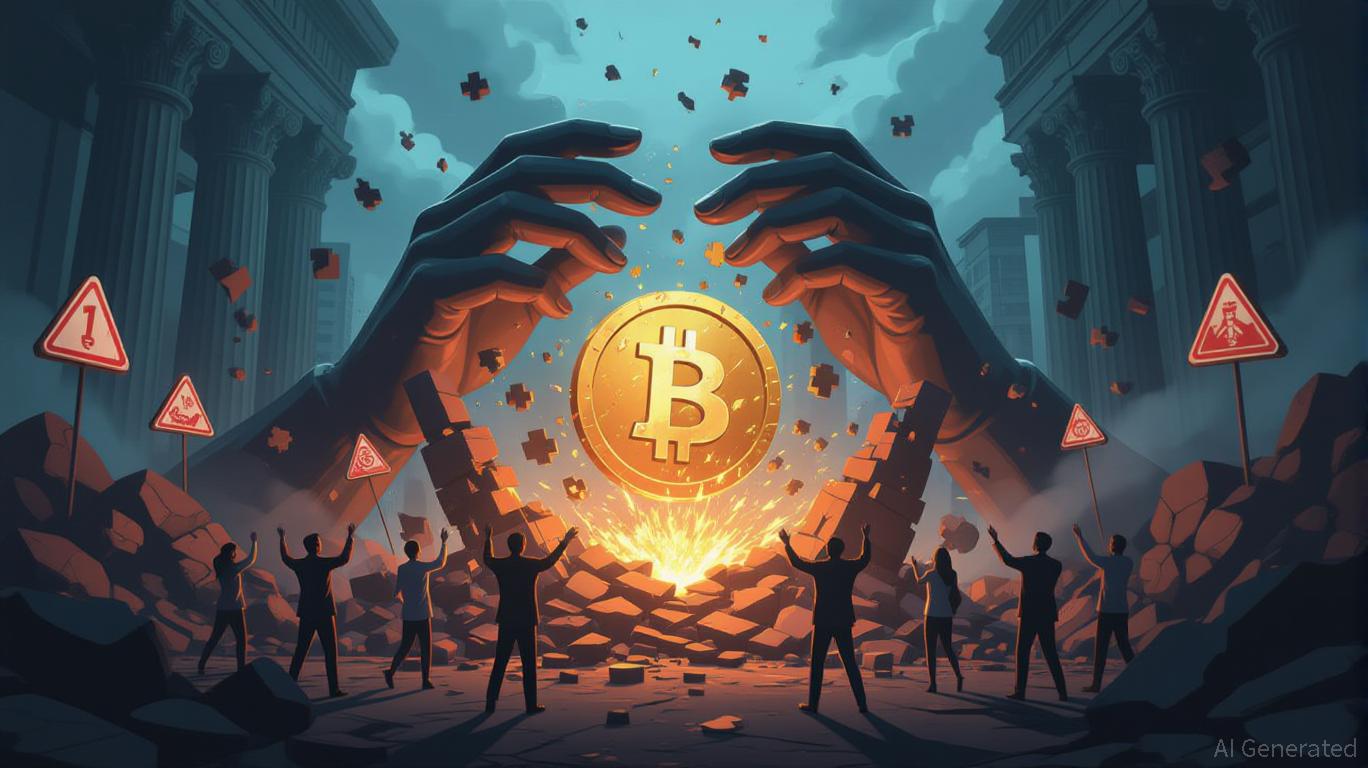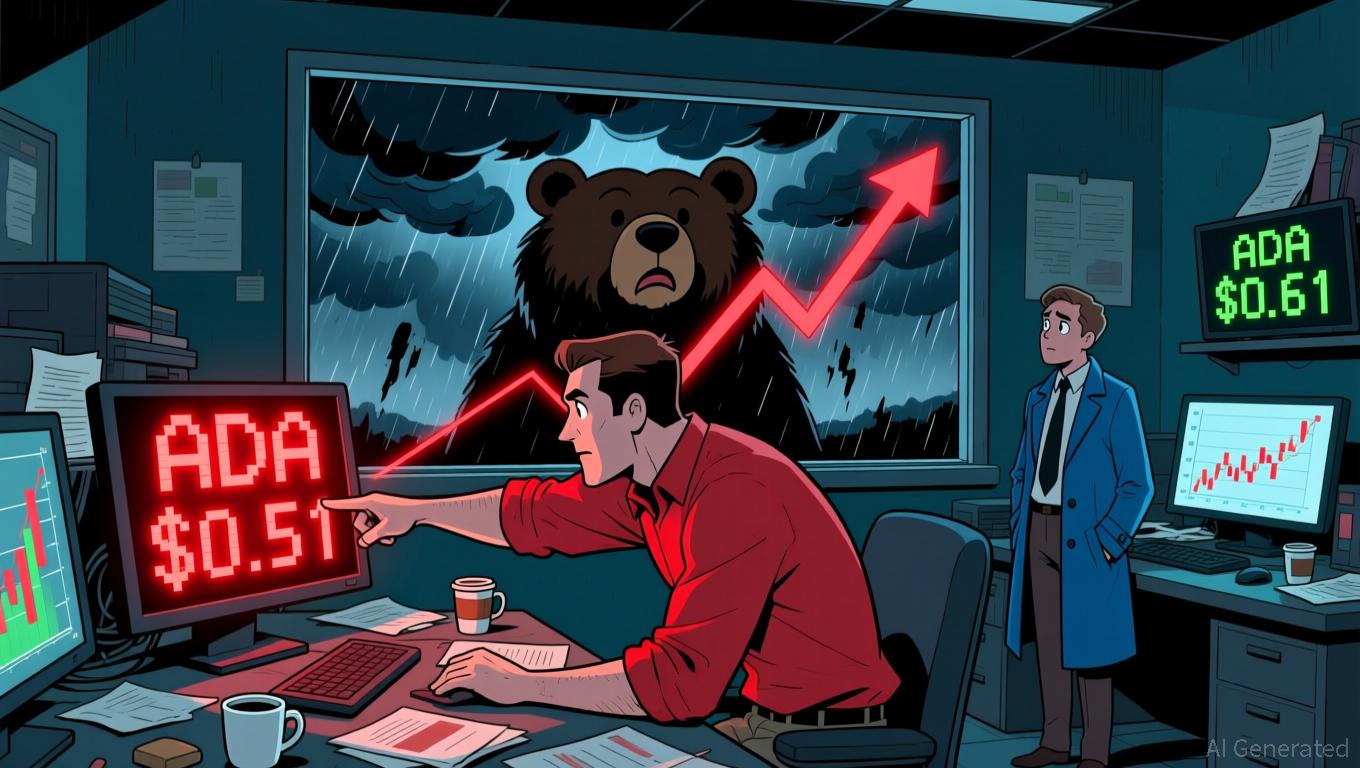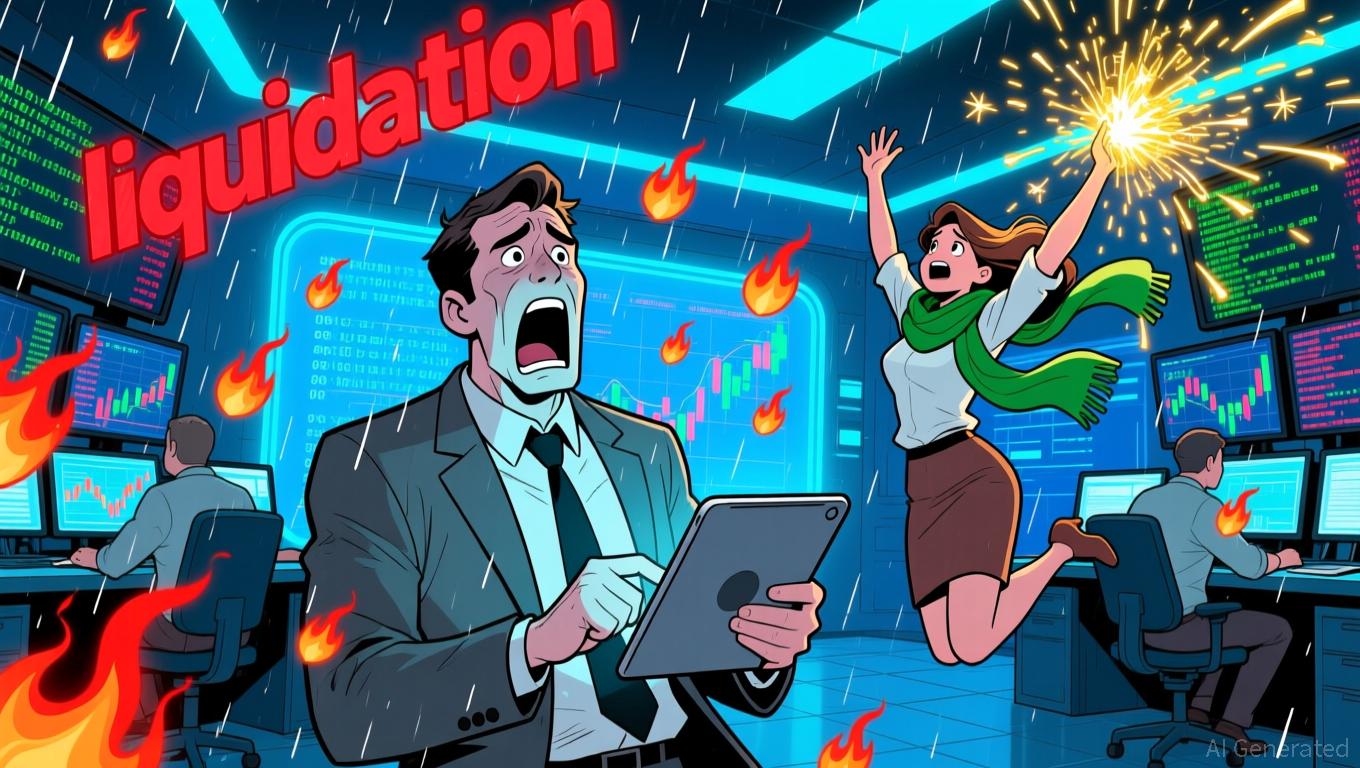COAI Token Fraud: An Urgent Alert for Cryptocurrency Investors
- COAI token's 2025 collapse exposed DeFi and algorithmic stablecoin vulnerabilities, triggering market turmoil and regulatory scrutiny. - Centralized governance (87.9% token control) and opaque liquidity models enabled manipulation, while fragmented regulations (GENIUS Act, MiCA) worsened compliance risks for smaller projects. - Investors now prioritize due diligence on team transparency, regulatory compliance, and tokenomics, as COAI's lack of audits and centralized control highlighted systemic risks. -
The COAI Collapse: A Case Study in Systemic Risk
The COAI token debacle, which revolved around its algorithmic stablecoins
This disaster was not an isolated case but rather a reflection of deeper problems within DeFi.

Regulatory Responses: Progress and Persistent Gaps
Following the COAI incident, regulatory bodies have moved quickly to address regulatory gaps.
On a global scale, Southeast Asia has become a center for crypto-related scams,
Due Diligence Best Practices for Crypto Investors
The COAI controversy serves as a powerful lesson on the necessity of both reputational and regulatory due diligence.
Adhering to regulatory requirements is just as vital.
Clear and open tokenomics is also crucial. Projects that lack transparency in token distribution, have unverifiable reserves, or are governed by centralized entities—such as
The Path Forward: Global Cooperation and Investor Vigilance
Although regulations like MiCA and the proposed CLARITY Act seek to define AI tokens more clearly,
For both retail and institutional investors, the COAI debacle is a stark warning. As DeFi continues to develop, due diligence must go beyond financial analysis to include governance evaluation, regulatory compliance, and community feedback.
Ultimately, the crypto sector’s ability to recover and thrive will depend on learning from setbacks like COAI. Until then, investors should approach this unpredictable environment with vigilance, giving priority to openness and regulatory adherence rather than speculative trends.
Disclaimer: The content of this article solely reflects the author's opinion and does not represent the platform in any capacity. This article is not intended to serve as a reference for making investment decisions.
You may also like
Investors Embrace AI and Tokenization Amid Decline in Conventional Markets
- Crypto market declines reflect investor shift to AI-driven platforms and tokenized assets amid traditional market volatility. - Recent token listings show diminishing returns (e.g., SEI/2Z 8-5% drops), signaling skepticism toward conventional mechanisms. - AI optimizes private market operations (e.g., SaaS growth, HELOC underwriting) while democratizing capital access beyond institutional bias. - Tokenization unlocks liquidity in art and healthcare via AI-driven insights, challenging traditional VC model

Cardano News Update: Institutions Embrace Cardano While DeFi Advances—Cardano and Mutuum Finance Set the Stage for 2025 Crypto Evolution
- Cardano (ADA) and Mutuum Finance (MUTM) lead 2025 crypto divergence through institutional adoption and DeFi innovation. - Cardano partners with EMURGO/Wirex to launch ADA-spending "Cardano Card," targeting 6M users and ISO 20022 alignment for institutional credibility. - Mutuum Finance raises $18.8M in presale, plans Q4 2025 testnet with liquidity pools and mtTokens, offering 250% returns for early buyers. - ADA faces bearish technical patterns and whale selling, while MUTM's low entry price and structur

XRP News Today: Crypto Market Turbulence Rises as SEC Alters Regulations and Major Whale Closes Short Position
- A "Triple Short ASTER" whale liquidated a 4.79M AST short position, triggering crypto market volatility and $10M+ in ETH/XRP losses. - XRP dropped to $2.40 amid Canary Capital's ETF launch, while ETH longs face losses from SEC's accelerated crypto ETF approval process. - SEC's 20-day ETF filing rule and 21Shares' crypto index ETFs (TTOP/TXBC) highlight growing institutional exposure and regulatory uncertainty. - Market analysts link whale activity to broader trends in derivatives trading, ETF adoption, a

China’s economic framework faces challenges from both international trade tensions and internal pressures
- China's economy faces stalling risks as trade tensions, supply chain disruptions, and domestic challenges converge, with record investment declines undermining growth. - Trump's 100% tariffs on Chinese imports and export controls, alongside Beijing's retaliatory measures, create volatility despite temporary trade truce efforts. - Sector-specific risks persist: antimony export bans are suspended, but rare earths and semiconductor disputes remain unresolved, while real estate-linked industries like Lingong
